An Improved Organic Solar Cell Lumped-Parameter Equivalent Circuit Model
Abstract
1. Introduction
2. Improved Model and Its Analytical Solution
3. Numerical Verification and Discussion
4. Experimental Verification and Comparison with Mazhari’s Model
5. Conclusions
Author Contributions
Funding
Conflicts of Interest
References
- Wagenpfahl, A.; Rauh, D.; Binder, M.; Deibel, C.; Dyakonov, V. S-shaped current-voltage characteristics of organic solar devices. Phys. Rev. B 2010, 82, 115306. [Google Scholar] [CrossRef]
- Tran, V.H.; Ambade, R.B.; Ambade, S.B.; Lee, S.H.; Lee, I.H. Low-temperature solution-processed SnO2 nanoparticles as cathode buffer layer for inverted organic solar cells. ACS Appl. Mater. Interfaces 2017, 9, 1645–1653. [Google Scholar] [CrossRef] [PubMed]
- Kim, T.; Kim, J.-H.; Kang, T.E.; Lee, C.; Shin, M.; Wang, C.; Ma, B.; Jeong, U.; Kim, T.-S.; Kim, B. Flexible, highly efficient all-polymer solar cells. Nat. Commun. 2015, 6, 8547. [Google Scholar] [CrossRef] [PubMed]
- He, Z.; Zhong, C.; Su, S.; Xu, M.; Wu, H.; Cao, Y. Enhanced power-conversion efficiency in polymer solar cells using an inverted device structure. Nat. Photonics 2012, 6, 591–595. [Google Scholar] [CrossRef]
- Liu, Y.; Zhao, J.; Li, Z.; Mu, C.; Ma, W.; Hu, H.; Jiang, K.; Lin, H.; Ade, H.; Yan, H. Aggregation and morphology control enables multiple cases of high-efficiency polymer solar cells. Nat. Commun. 2014, 5, 5293. [Google Scholar] [CrossRef] [PubMed]
- Chavali, R.V.K.; Li, J.V.; Battaglia, C.; Wolf, S.; Gray, J.L.; Alam, M.A. A generalized theory explains the anomalous Suns–Voc response of Si heterojunction solar cells. IEEE J. Photovolt. 2017, 7, 169–176. [Google Scholar] [CrossRef]
- Yoshikawa, K.; Kawasaki, H.; Yoshida, W.; Irie, T.; Konishi, K.; Nakano, K.; Uto, T.; Adachi, D.; Kanematsu, M.; Uzu, H. Silicon heterojunction solar cell with interdigitated back contacts for a photo conversion efficiency over 26%. Nat. Energy 2017, 2, 17032. [Google Scholar] [CrossRef]
- Castro, F.A.; Heier, J.; Nuesch, F.; Hany, R. Origin of the kink in current-density versus voltage curves and efficiency enhancement of polymer-C60 heterojunction solar cells. IEEE J. Sel. Top. Quantum Electron. 2010, 16, 1690–1699. [Google Scholar] [CrossRef]
- Jain, A.; Kapoor, A. A new approach to study organic solar cell using Lambert W-function. Sol. Energy Mater. Sol. Cells 2005, 86, 197–205. [Google Scholar] [CrossRef]
- Cheknane, A.; Hilal, H.S.; Djeffal, F.; Benyounce, B.; Charles, J.-P. An equivalent circuit approach to organic solar cell modelling. Microelectron. J. 2008, 39, 1173–1180. [Google Scholar] [CrossRef]
- Mazhari, B. An improved solar cell circuit model for organic solar cells. Sol. Energy Mater. Sol. Cells 2006, 90, 1021–1033. [Google Scholar] [CrossRef]
- Kumar, P.; Gaur, A. Model for the J-V characteristics of degraded polymer solar cells. J. Appl. Phys. 2013, 113, 094505. [Google Scholar] [CrossRef]
- García-Sánchez, F.J.; Lugo-Muñoz, D.; Muci, J.; Ortiz-Conde, A. Lumped parameter modeling of organic solar cells’ S-shaped I-V characteristics. IEEE J. Photovolt. 2013, 3, 330–335. [Google Scholar] [CrossRef]
- Zuo, L.; Yao, J.; Li, H.; Chen, H. Assessing the origin of the S-shaped I-V curve in organic solar cells: An improved equivalent circuit model. Sol. Energy Mater. Sol. Cells 2014, 122, 88–93. [Google Scholar] [CrossRef]
- Castro, F.A.; Heier, J.; Nuesch, F.; Hany, R. Origin of the kink in current-density versus voltage curves and efficiency enhancement of polymer-C60 heterojunction solar cells. IEEE J. Sel. Top. Quantum Electron. 2010, 16, 1690–1699. [Google Scholar] [CrossRef]
- Roland, P.J.; Bhandari, K.P.; Ellingson, R.J. Electronic Circuit Model for Evaluating S-Kink Distorted Current-Voltage Curves. In Proceedings of the Photovoltaic Specialists Conference (PVSC), Portland, OR, USA, 5–10 June 2016; IEEE: Piscataway, NJ, USA, 2016; pp. 3091–3094. [Google Scholar]
- Laudani, A.; Fulginei, F.R.; De Castro, F.; Salvini, A. Irradiance intensity dependence of the lumped parameters of the three diodes model for organic solar cells. Sol. Energy 2018, 163, 526–536. [Google Scholar] [CrossRef]
- Romero, B.; Pozo, G.; Arredondo, B.; Martín-Martín, D.; Gordoa, M.P.R.; Pickering, A.; Pérez-Rodríguez, A.; Barrena, E.; García-Sánchez, F.J. S-shaped I-V characteristics of organic solar cells: Solving Mazhari’s lumped-parameter equivalent circuit model. IEEE Trans. Electron Devices 2017, 64, 4622–4627. [Google Scholar] [CrossRef]
- Huang, G.; Yu, F.; Xu, C. An Analytical Solution to Lumped Parameter Equivalent Circuit Model of Organic Solar Cells. Crystals 2018, 8, 224. [Google Scholar] [CrossRef]
- Castro, F.A.; Laudani, A.; Fulginei, F.R.; Salvini, A. An in-depth analysis of the modelling of organic solar cells using multiple-diode circuits. Sol. Energy 2016, 135, 590–597. [Google Scholar] [CrossRef]
- Shockley, W. The theory of p-n junctions in semiconductors and p-n junction transistors. Bell Syst. Tech. J. 1949, 28, 435–489. [Google Scholar] [CrossRef]
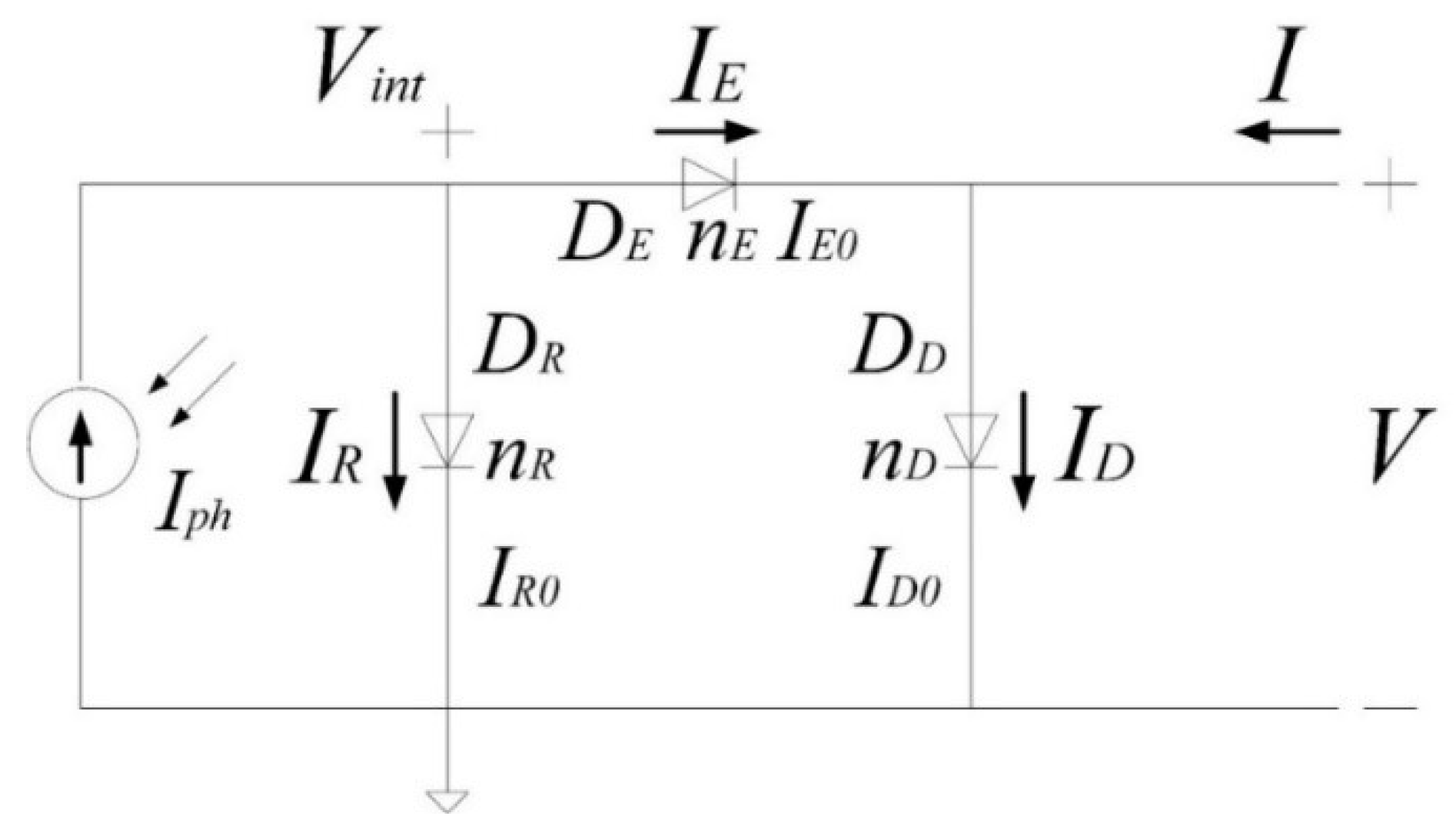
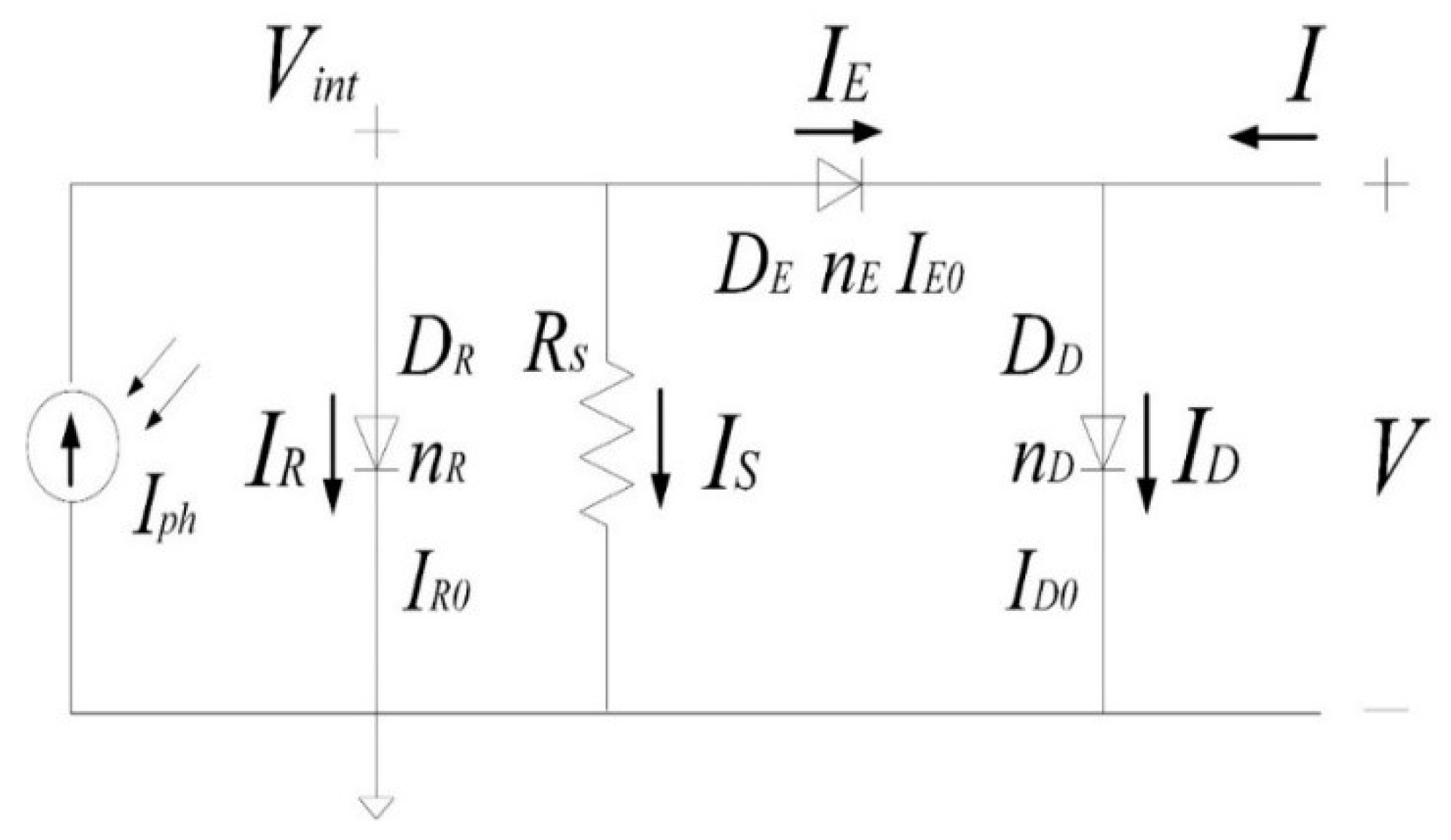
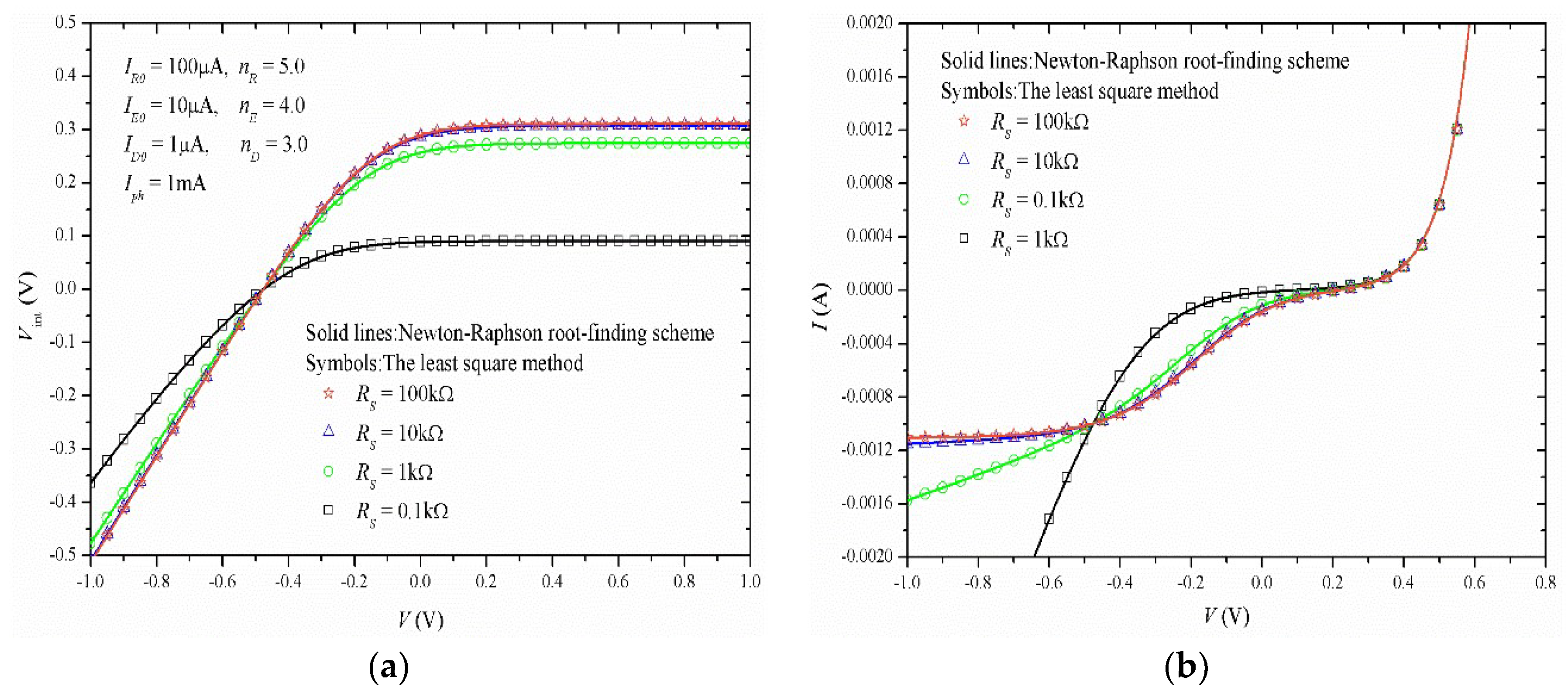
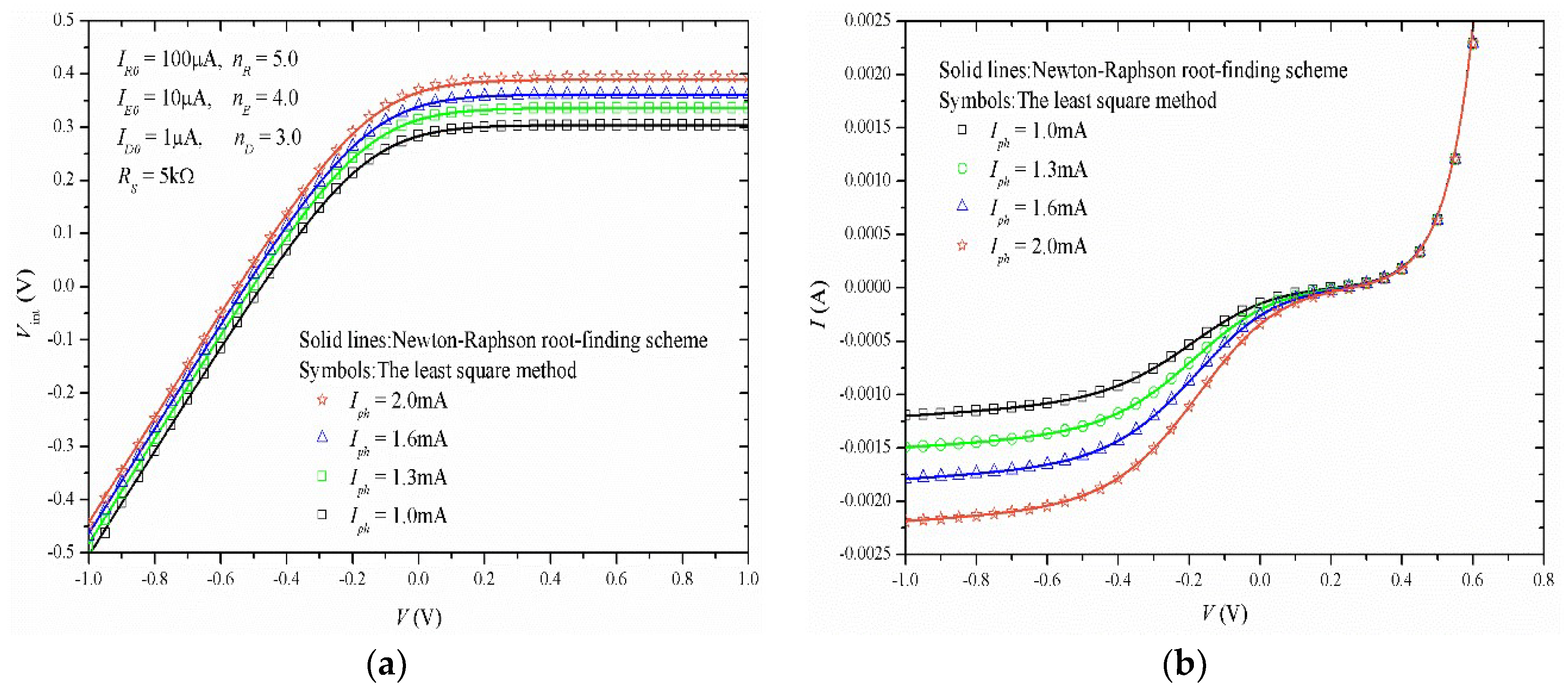
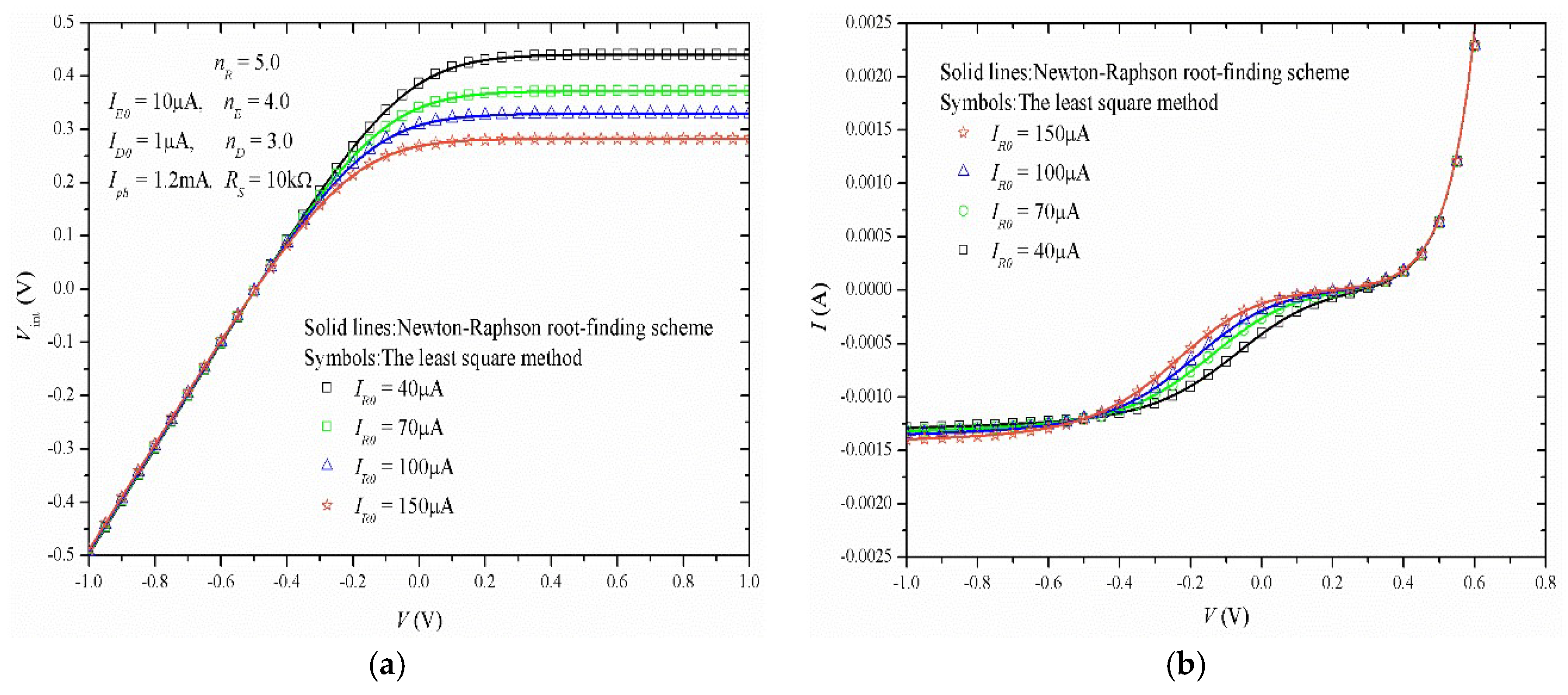
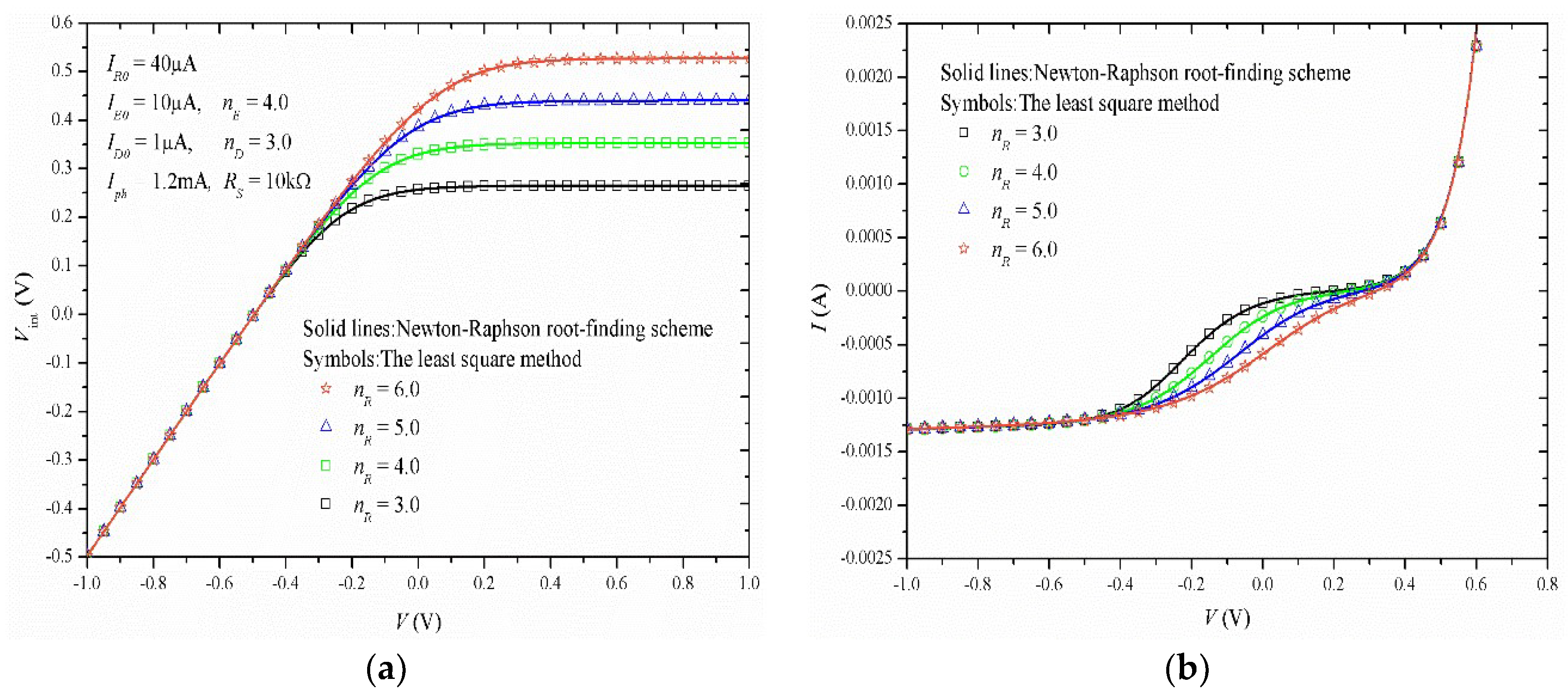
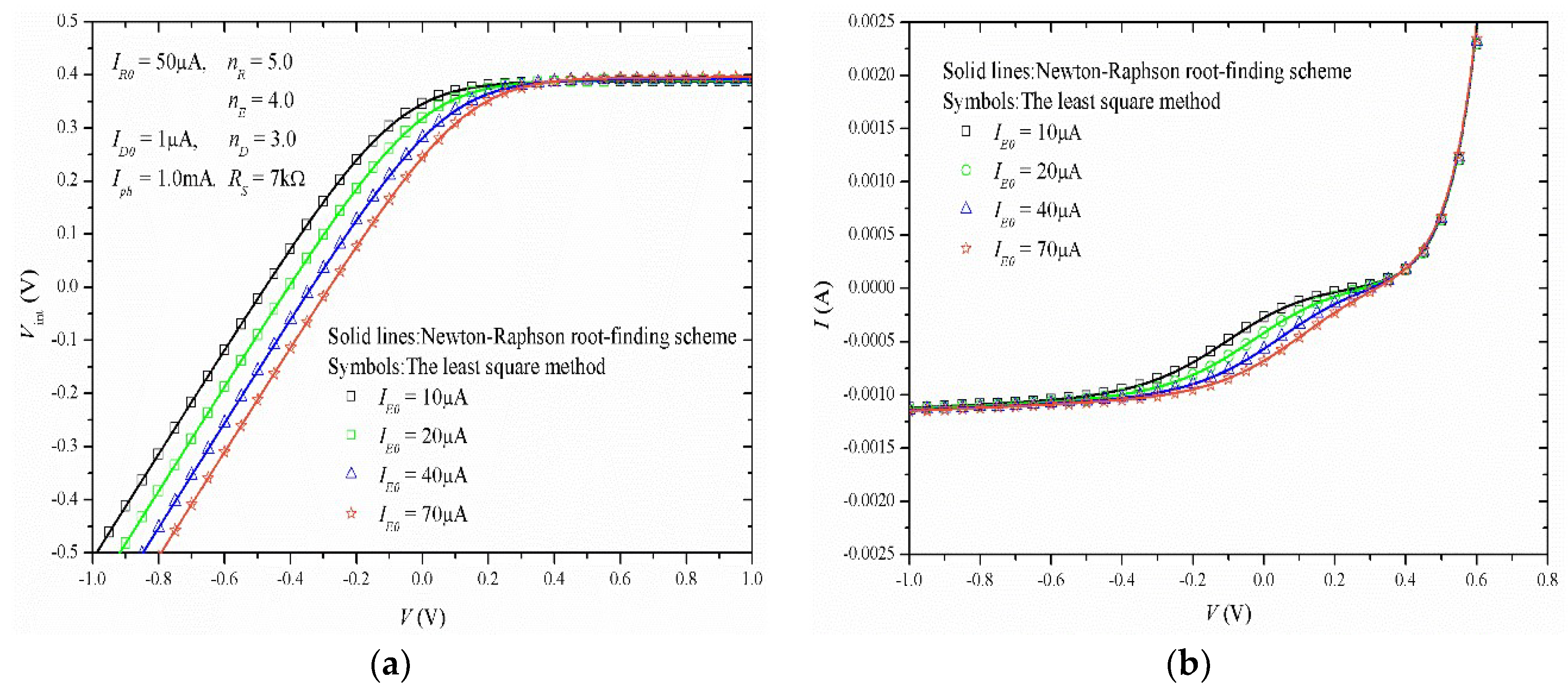
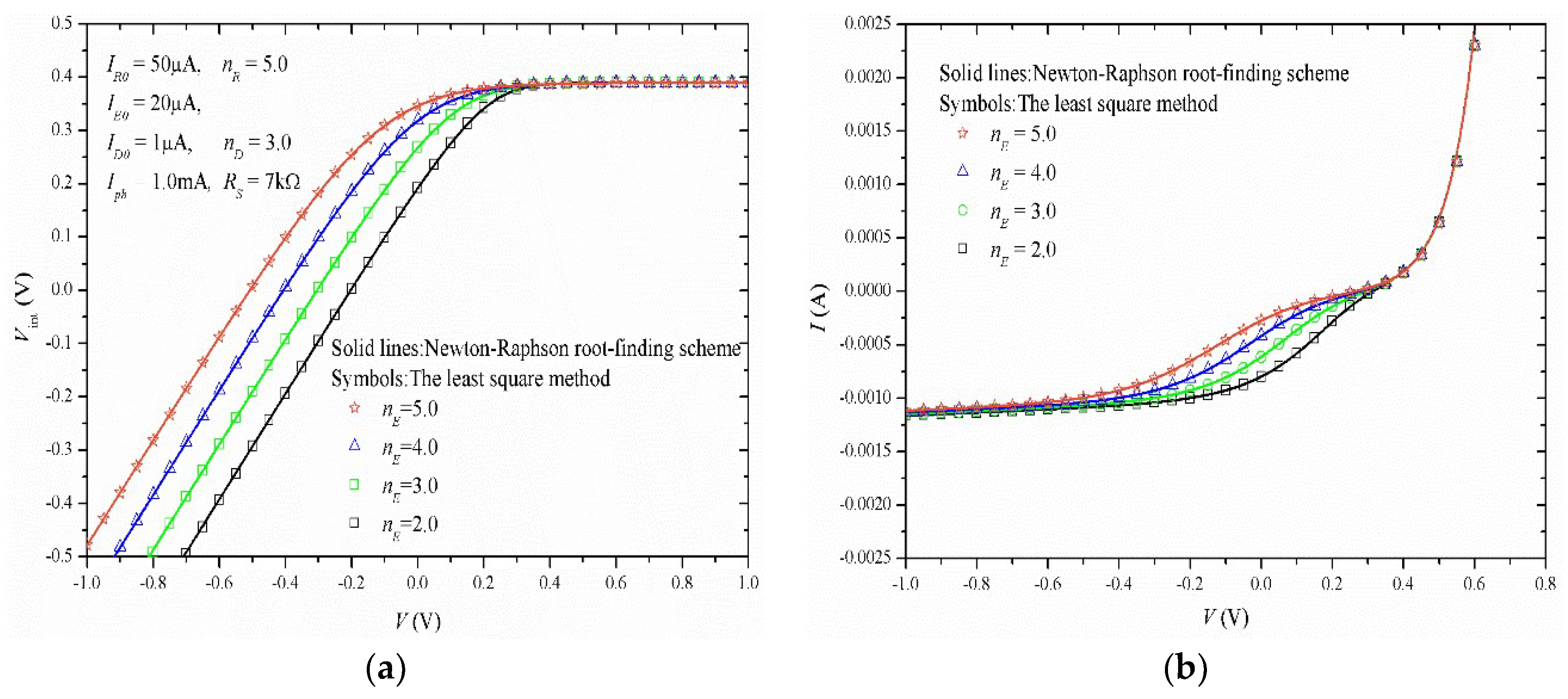
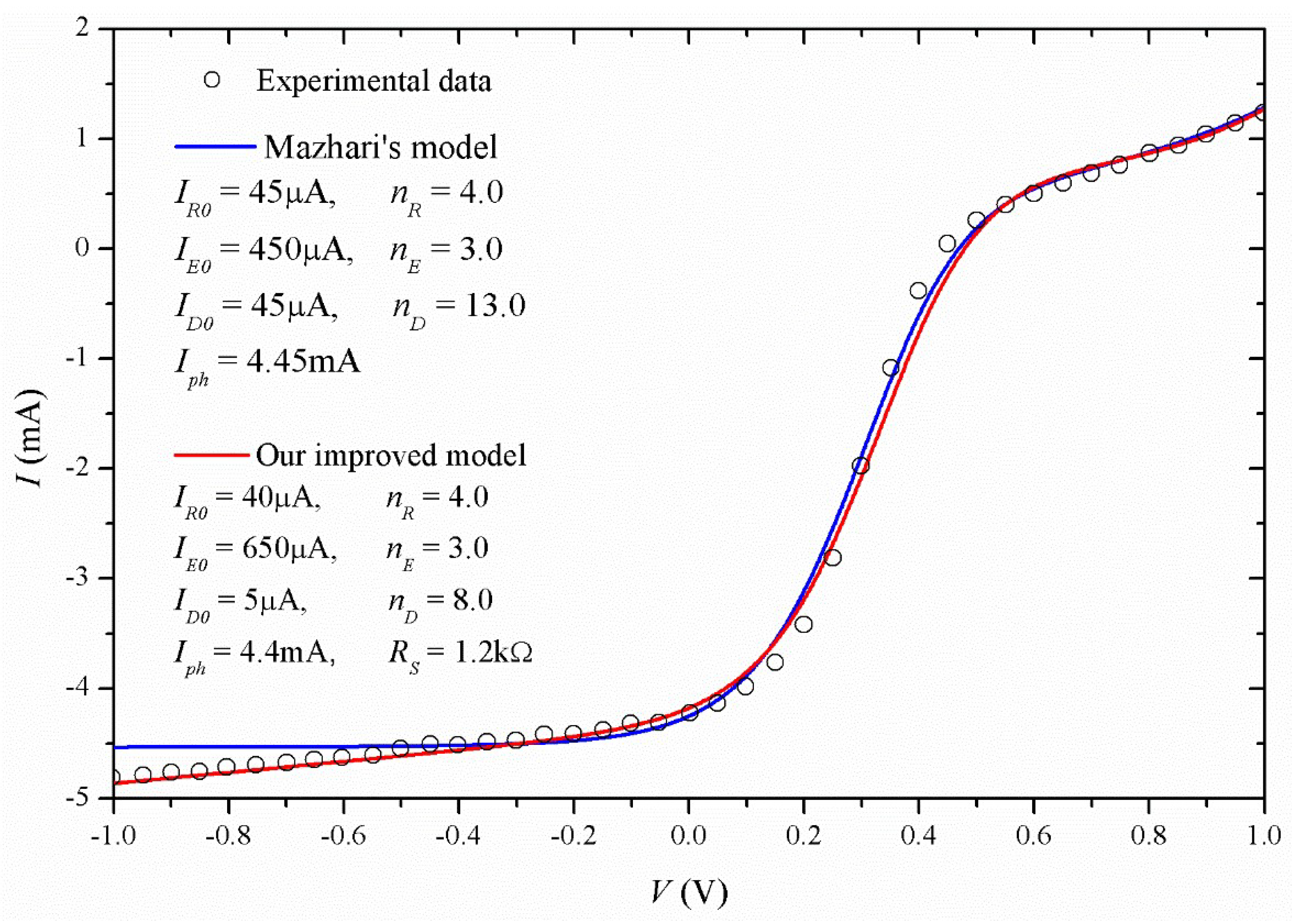
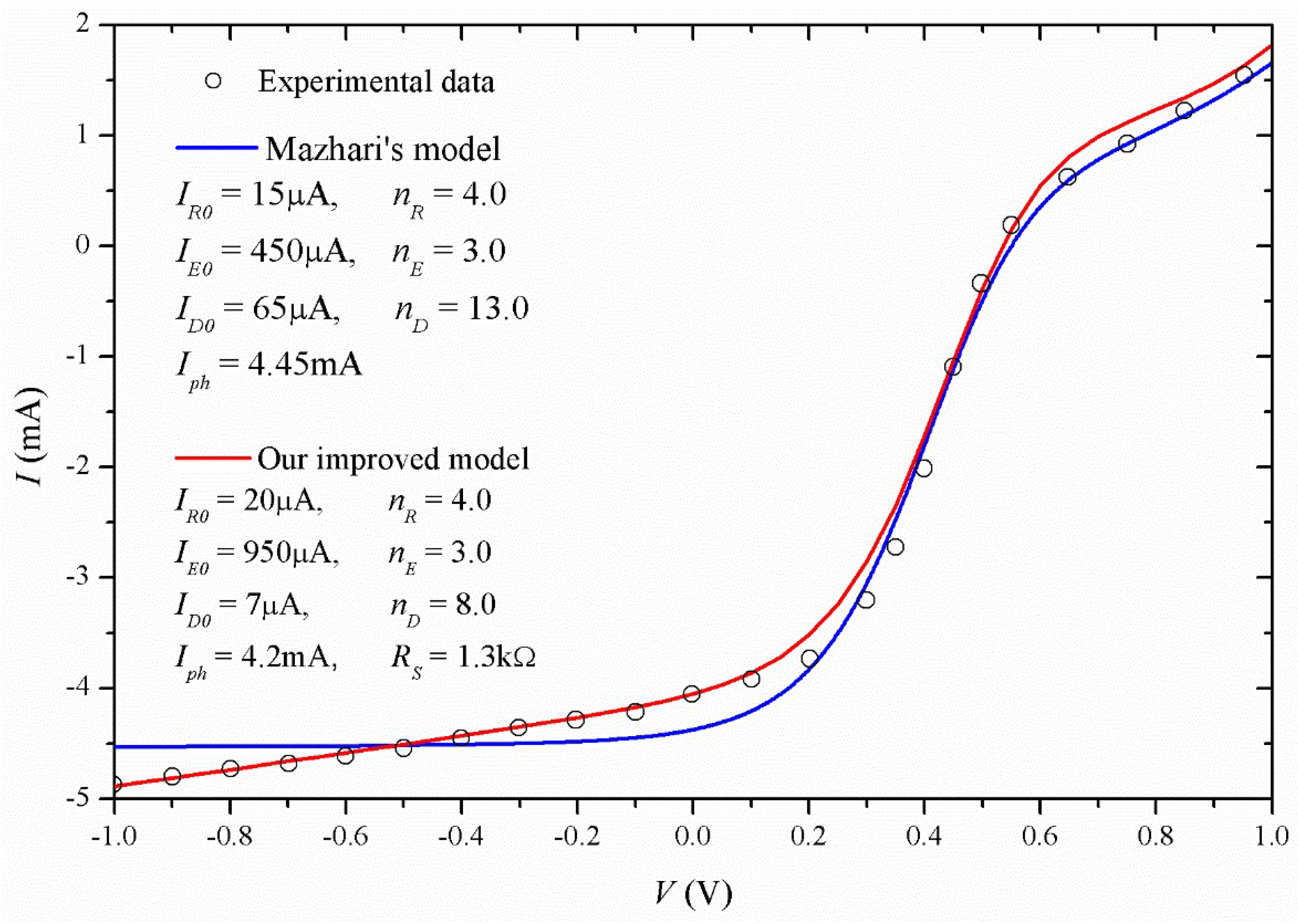
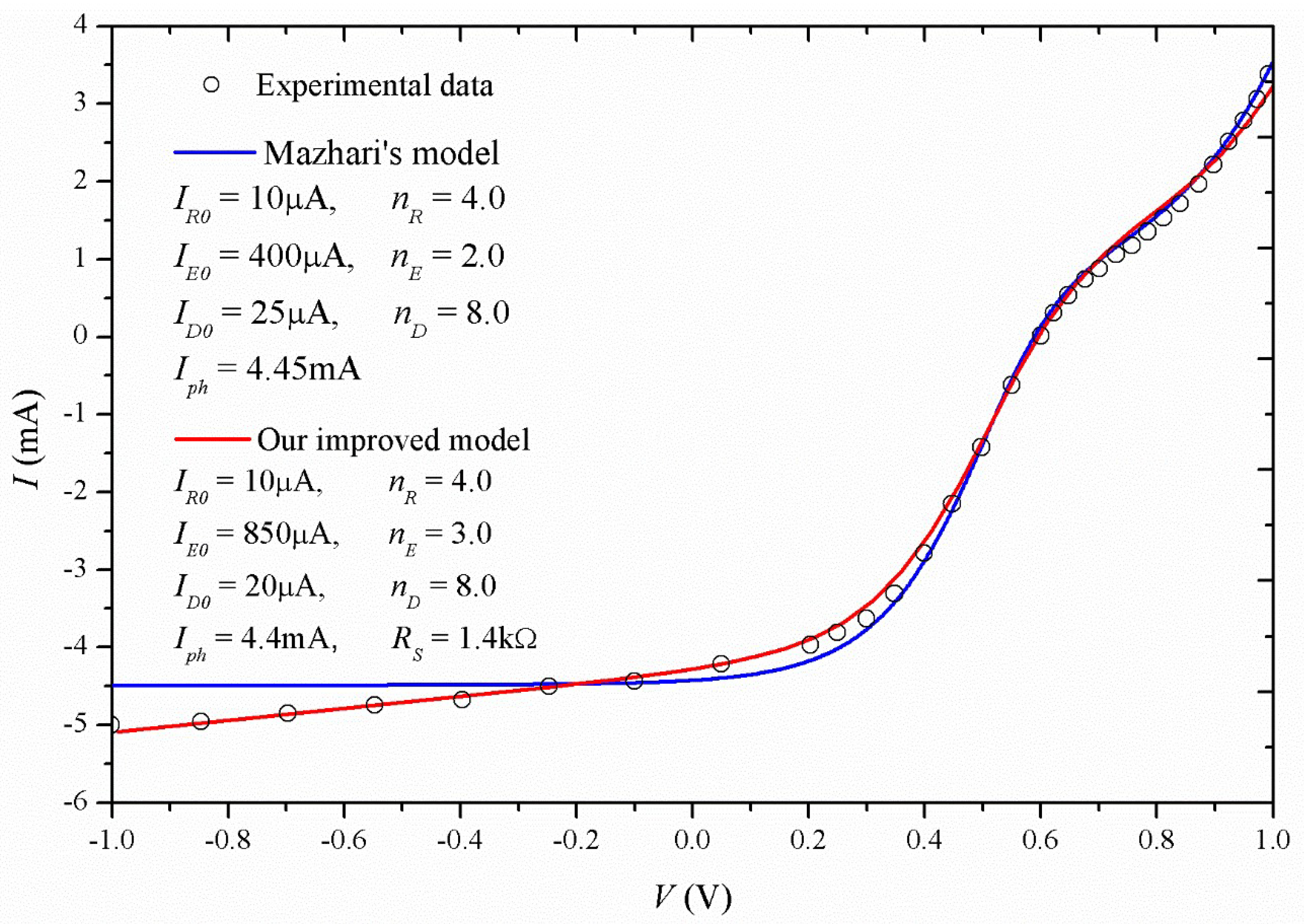
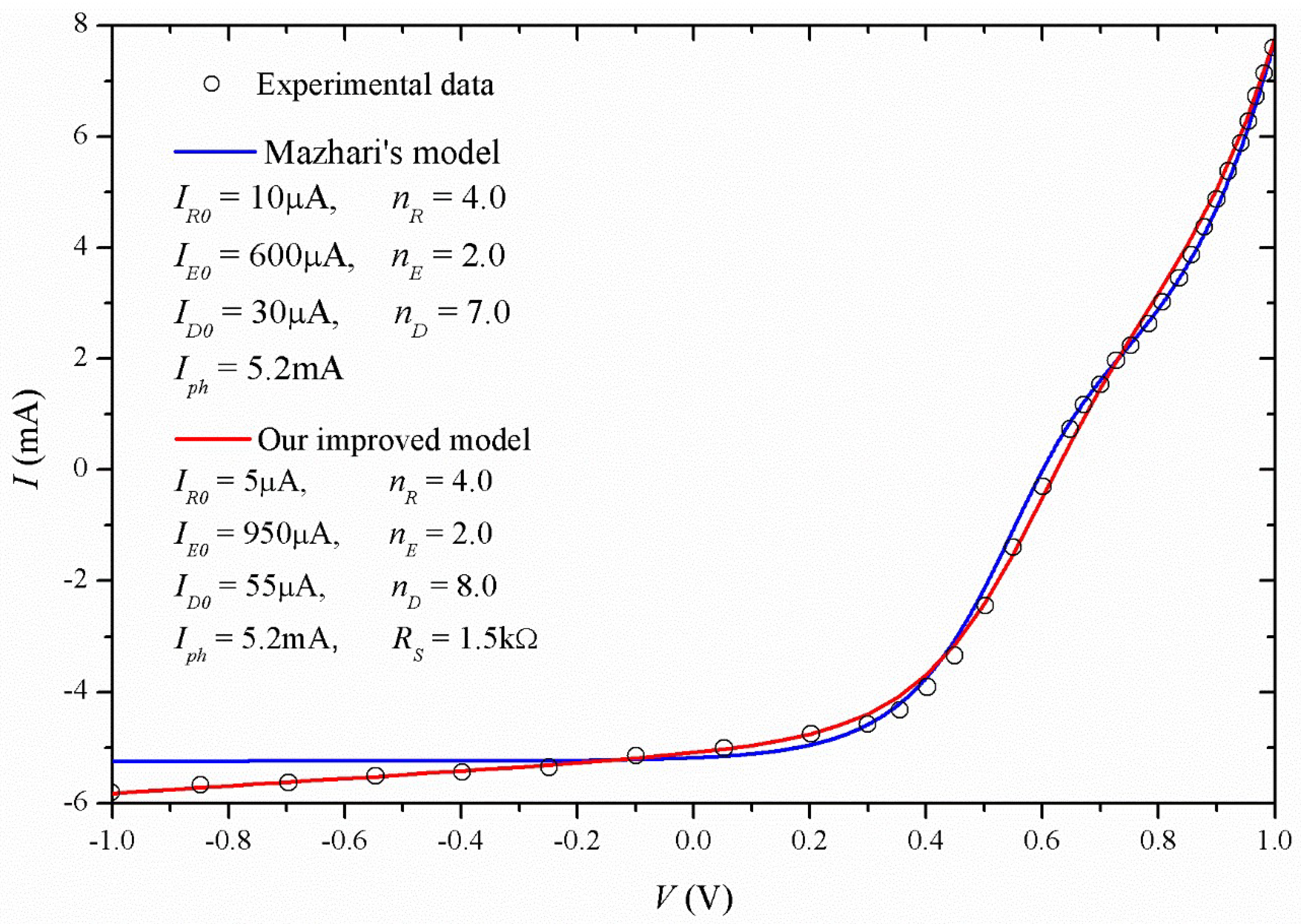
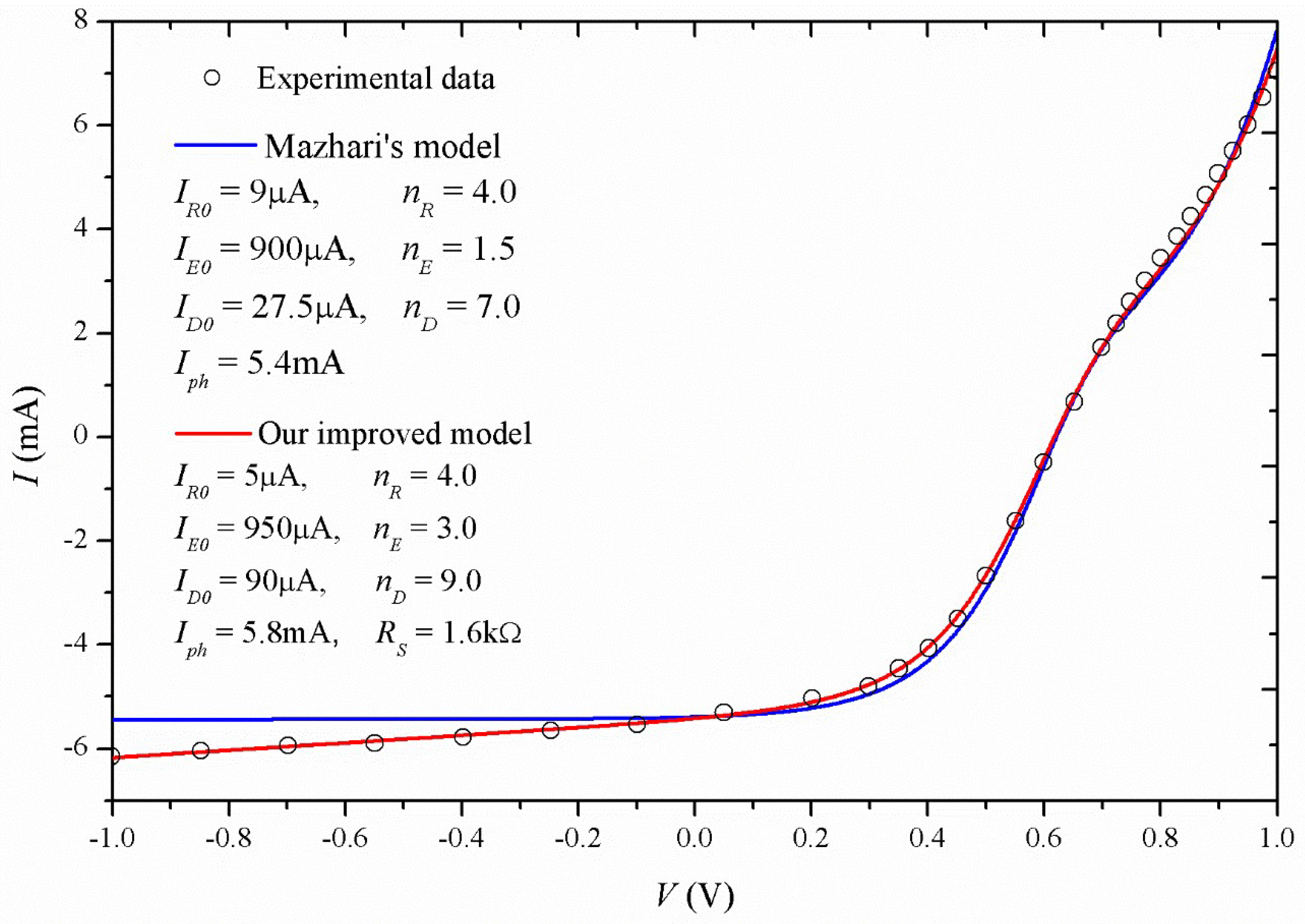
© 2018 by the authors. Licensee MDPI, Basel, Switzerland. This article is an open access article distributed under the terms and conditions of the Creative Commons Attribution (CC BY) license (http://creativecommons.org/licenses/by/4.0/).
Share and Cite
Xu, C.; Yu, F.; Lin, W.; Huang, G. An Improved Organic Solar Cell Lumped-Parameter Equivalent Circuit Model. Crystals 2018, 8, 277. https://doi.org/10.3390/cryst8070277
Xu C, Yu F, Lin W, Huang G. An Improved Organic Solar Cell Lumped-Parameter Equivalent Circuit Model. Crystals. 2018; 8(7):277. https://doi.org/10.3390/cryst8070277
Chicago/Turabian StyleXu, Chuanzhong, Fei Yu, Wei Lin, and Gongyi Huang. 2018. "An Improved Organic Solar Cell Lumped-Parameter Equivalent Circuit Model" Crystals 8, no. 7: 277. https://doi.org/10.3390/cryst8070277
APA StyleXu, C., Yu, F., Lin, W., & Huang, G. (2018). An Improved Organic Solar Cell Lumped-Parameter Equivalent Circuit Model. Crystals, 8(7), 277. https://doi.org/10.3390/cryst8070277




